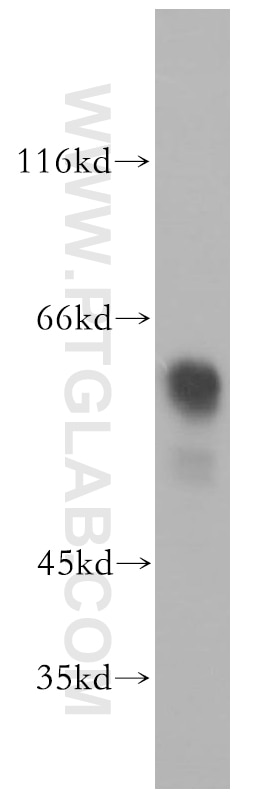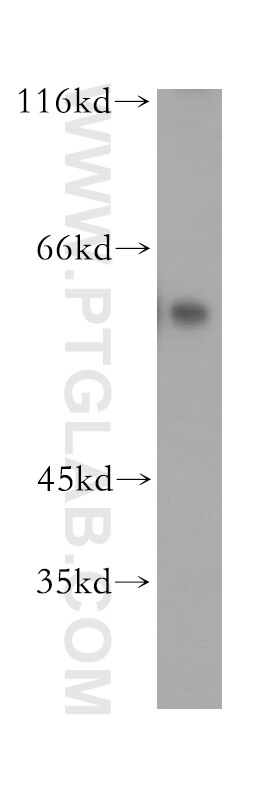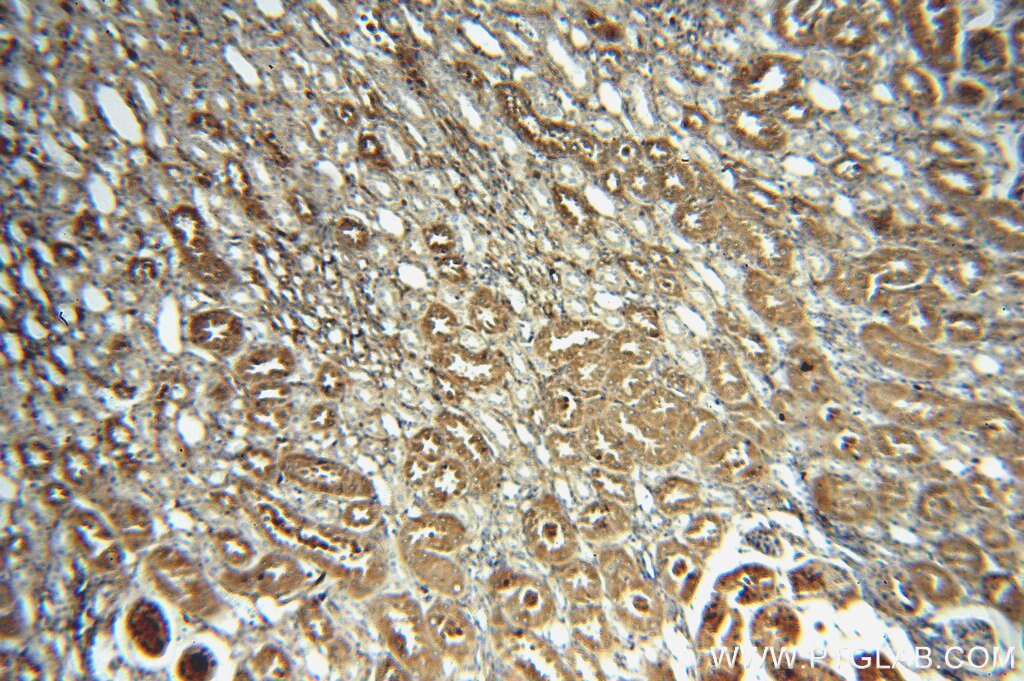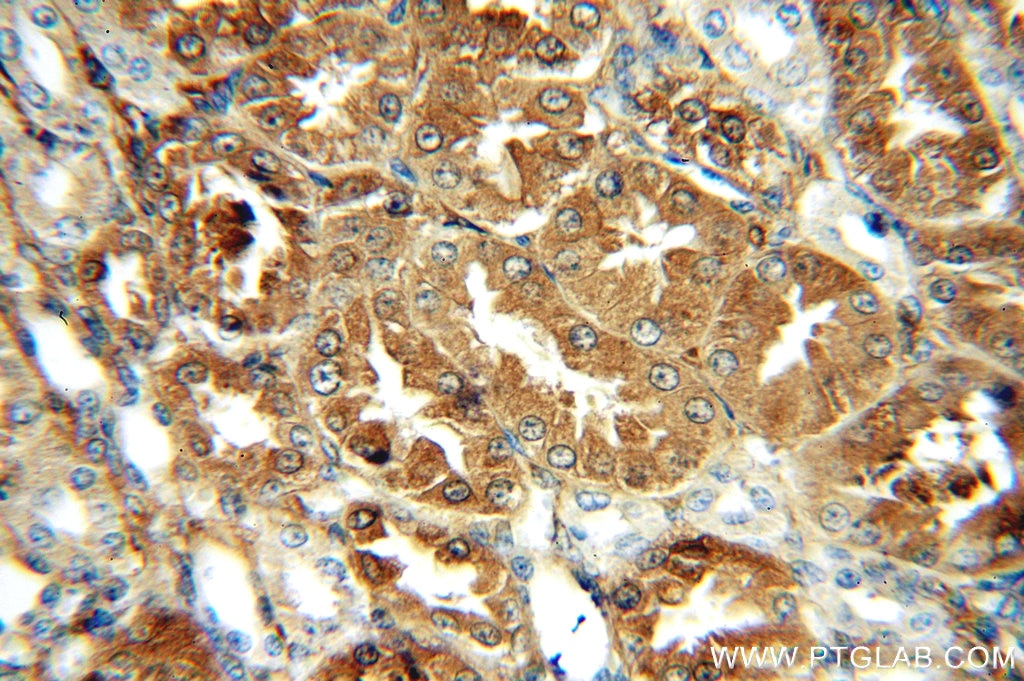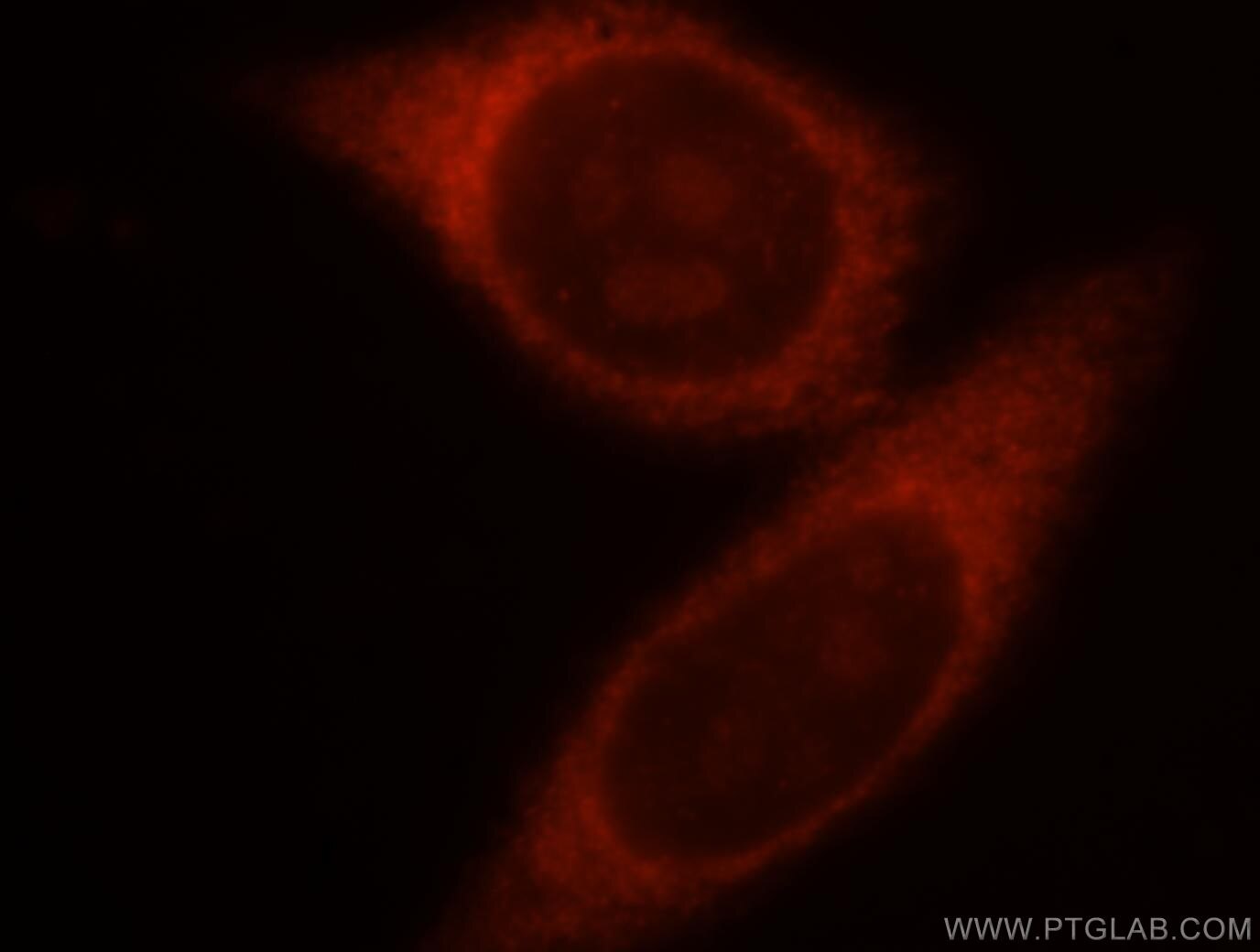Anticorps Polyclonal de lapin anti-CRMP4
CRMP4 Polyclonal Antibody for WB, IP, IF, IHC, ELISA
Hôte / Isotype
Lapin / IgG
Réactivité testée
Humain, rat, souris
Applications
WB, IHC, IF/ICC, IP, ELISA
Conjugaison
Non conjugué
N° de cat : 18969-1-AP
Synonymes
Galerie de données de validation
Applications testées
| Résultats positifs en WB | cellules SH-SY5Y, cellules Jurkat, tissu de cervelet de souris, tissu de thymus de souris |
| Résultats positifs en IP | cellules SH-SY5Y |
| Résultats positifs en IHC | tissu de cancer du foie humain, tissu rénal humain il est suggéré de démasquer l'antigène avec un tampon de TE buffer pH 9.0; (*) À défaut, 'le démasquage de l'antigène peut être 'effectué avec un tampon citrate pH 6,0. |
| Résultats positifs en IF/ICC | cellules HepG2 |
Dilution recommandée
| Application | Dilution |
|---|---|
| Western Blot (WB) | WB : 1:500-1:3000 |
| Immunoprécipitation (IP) | IP : 0.5-4.0 ug for 1.0-3.0 mg of total protein lysate |
| Immunohistochimie (IHC) | IHC : 1:100-1:400 |
| Immunofluorescence (IF)/ICC | IF/ICC : 1:10-1:100 |
| It is recommended that this reagent should be titrated in each testing system to obtain optimal results. | |
| Sample-dependent, check data in validation data gallery | |
Applications publiées
| WB | See 2 publications below |
| IP | See 1 publications below |
Informations sur le produit
18969-1-AP cible CRMP4 dans les applications de WB, IHC, IF/ICC, IP, ELISA et montre une réactivité avec des échantillons Humain, rat, souris
| Réactivité | Humain, rat, souris |
| Réactivité citée | rat, souris |
| Hôte / Isotype | Lapin / IgG |
| Clonalité | Polyclonal |
| Type | Anticorps |
| Immunogène | CRMP4 Protéine recombinante Ag5299 |
| Nom complet | dihydropyrimidinase-like 3 |
| Masse moléculaire calculée | 570 aa, 62 kDa |
| Poids moléculaire observé | 60-70 kDa |
| Numéro d’acquisition GenBank | BC039006 |
| Symbole du gène | CRMP4 |
| Identification du gène (NCBI) | 1809 |
| Conjugaison | Non conjugué |
| Forme | Liquide |
| Méthode de purification | Purification par affinité contre l'antigène |
| Tampon de stockage | PBS avec azoture de sodium à 0,02 % et glycérol à 50 % pH 7,3 |
| Conditions de stockage | Stocker à -20°C. Stable pendant un an après l'expédition. L'aliquotage n'est pas nécessaire pour le stockage à -20oC Les 20ul contiennent 0,1% de BSA. |
Informations générales
DPYSL3(Dihydropyrimidinase-related protein 3) is also named as CRMP4, DRP3, ULIP, ULIP1 and belongs to the hydantoinase/dihydropyrimidinase subfamily.DPYSL3 is a developmentally regulated protein, strongly expressed in early embryonic post-mitotic neural cells, reaching a peak of expression around the first post-natal week. In the adult brain, DPYSL3 is present mainly in regions that retain neurogenesis.DPYSL3 protein is also found in synaptic sites at the adult neuromuscular junction where it may be involved in the maintenance of neuronal stability(PMID: 16135096).It has 2 isoforms produced by alternative splicing.
Protocole
| Product Specific Protocols | |
|---|---|
| WB protocol for CRMP4 antibody 18969-1-AP | Download protocol |
| IHC protocol for CRMP4 antibody 18969-1-AP | Download protocol |
| IF protocol for CRMP4 antibody 18969-1-AP | Download protocol |
| IP protocol for CRMP4 antibody 18969-1-AP | Download protocol |
| Standard Protocols | |
|---|---|
| Click here to view our Standard Protocols |
Publications
| Species | Application | Title |
|---|---|---|
Free Radic Biol Med Proteomic analysis of the glutathione-deficient LEGSKO mouse lens reveals activation of EMT signaling, loss of lens specific markers, and changes in stress response proteins. | ||
Biochem Biophys Res Commun Up-regulation of DRP-3 long isoform during the induction of neural progenitor cells by glutamate treatment in the ex vivo rat retina. |
